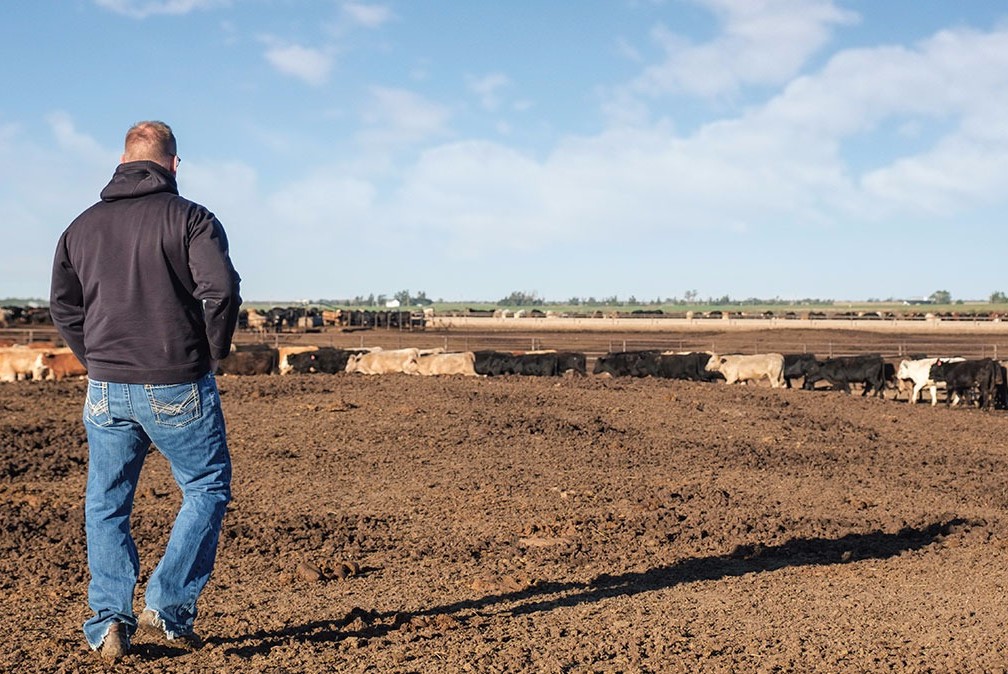
Agricultural News
A Look at Declining Feedlot Production in 2022 with OSU's Derrell Peel
Mon, 07 Feb 2022 10:46:41 CST
 Weekly, Derrell Peel, extension livestock marketing specialist at Oklahoma State University, offers his expertise in the cattle industry. This is a part of the weekly series known as the "Cow-Calf Corner" published electronically by Paul Beck. Today, Peel talks about declining feedlot production in 2022.
Weekly, Derrell Peel, extension livestock marketing specialist at Oklahoma State University, offers his expertise in the cattle industry. This is a part of the weekly series known as the "Cow-Calf Corner" published electronically by Paul Beck. Today, Peel talks about declining feedlot production in 2022.
On January 1, 2022, the inventory of cattle in U.S. feedlots was 14.69 million head, up fractionally from 14.67 million head one year ago. All other categories of the USDA Cattle report were down, confirming that the industry continues to liquidate cattle numbers from the 2019 cyclical peak. The all cattle and calves inventory was 91.9 million head, down 2% year over year. The beef cow herd at 30.125 million head, was down 2.3% from one year ago and is down 4.9% in the three years since the 2019 peak. The 2021 calf crop was 35.09 million head, down 1.2% year over year and down 3.4% from the 2018 peak calf crop for this cattle cycle.
How can feedlot inventories be above year ago levels if the calf crop has declined the past three years? The usual flow of feeder cattle over time would suggest that feedlot inventories should have peaked in 2020. Several factors explain this delay between calf production and feedlot production. The pandemic in 2020 resulted in delayed feedlot placements that pushed peak feedlot inventories into 2021. On a monthly basis, feedlot inventories peaked in February 2021. A twelve-month moving average of feedlot inventories allows month to month comparisons without seasonality and shows that average feedlot inventories peaked in June 2021. However, feedlot inventories have been very slow to decline since then and even moved slightly higher at the end of 2021. The twelve-month moving average of feedlot inventories on January 1 was down a scant 0.49% from the June peak. How can this be, and can it continue?
Feedlots certainly have individual incentives to keep feedlots as full as possible. Utilization of pen space and feed mill capacity are important economic factors. Unexpectedly large placements in November and December of 2021 pushed monthly feedlot totals slightly higher coming into 2022. Those placements largely consisted of lightweight feeder cattle because, increasingly, that is what is available. Feedlots have been borrowing against the future to hold feedlot inventories as high as possible to this point; and the ability to do that will decrease in the next few months. The estimated supply of feeder cattle, calculated from January 1 inventories of steers over 500 lbs, other (non-replacement) heifers over 500 lbs., and calves under 500 pounds, with current feedlot inventories subtracted was at 25.54 million head, down 2.6% year over year.
The recent lightweight feedlot placements will take longer to finish and will hold feedlot inventories for a while but there simply are not enough feeder cattle to maintain feedlot inventories for too many months. The ratio of feedlot inventories to feeder cattle supplies is a measure of how intensively the feeder cattle supply is being used. This ratio in percentage terms was 57.5% on January 1, a record level for this measure. In other words, the number of cattle in feedlots was 57.5% of the supply feeder cattle available or, stated another way, there are only 1.74 head of feeder cattle available to replace the cattle currently in feedlots. This is the lowest supply of feeder cattle to feedlot inventories on record. Baring significant drought-forced early placements or some other disruption in cattle markets, feedlot inventories should show a much more noticeable decline in 2022.
WebReadyTM Powered by WireReady® NSI
Top Agricultural News
More Headlines...




